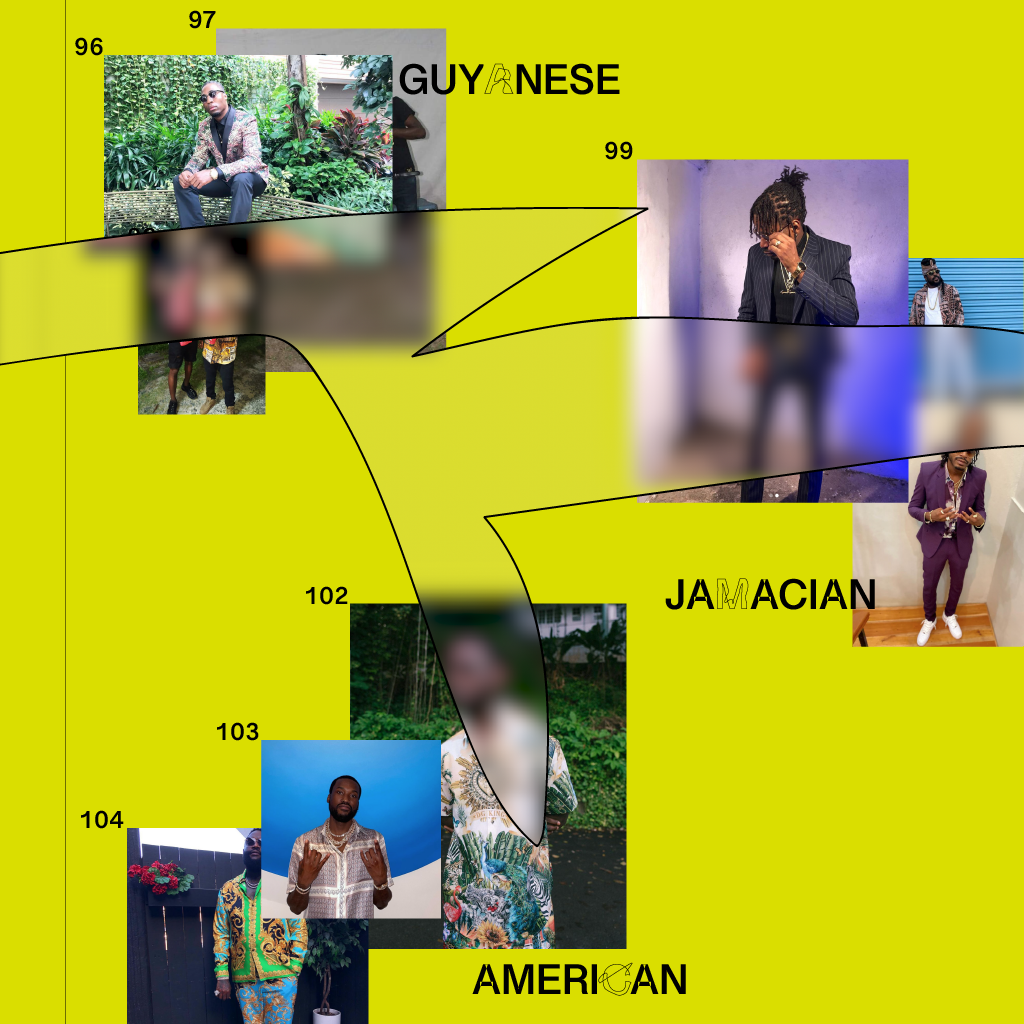Resisting Erasure

Book/Editorial

Book/Editorial

Book/Editorial

Book/Editorial

Book/Editorial

Book/Editorial

Book/Editorial

Book/Editorial
Book/Editorial

Web Design

Designer(s)
Makeba Gaskin
Duration
0 Weeks
Recognitions
Overview
“Resisting Erasure” is a research driven web-based editorial experience that attempts to understand the impact of slavery’s efforts to erase African identity through the examination of a Guyanese archetype: the Saga Boy. The Saga Boy is a hyper-masculine posture. A man that wears fashionable designer (or knock-off) clothing despite his financial situation, doesn’t care for academics, seeks female attention and does little else than pose, party and sleep with women, all in an effort to appear strong, validate his masculinity and ultimately, to be seen.
Research
I consulted a number of literary sources to support my thesis, including, “Simulacra and Simulation” by Jean Baudrillard and “Cool Pose: The Dilemma of Black Manhood in America” by Richard Majors & Janet Mancini Billson. After conceptually supporting my hypothesis, I began to conduct visual research. I pulled historical images from sources such as the National British Archives and contemporary images from the Instagram pages of musical artists. Because Instagram is a platform for self-representation and gloating, the images that I retrieved added a new layer of meaning. During my Instagram search, I noticed a striking similarity between Guyanese, Jamaican and American artists. From this point, I began to explore hegemony’s role in the construction and maintenance of the contemporary Saga Boy image.
Visual Output
My research takes the form of web-based editorial experience with a narrative structure. Each numbered section explores a different portion of my research. My piece features scribbles, missing type, and an incomplete scrap book feel to allude to the idea of imperfectly filling in blanks¬–a mirror to the image of the Saga Boy. The blurred segments suggest a feeling of invisibility but also of erasure. The images are meant to be moveable¬; by moving the images outside of the blurred areas the user becomes a part of the effort to resist erasure.
Conclusions
Through my research, I was able to conclude that the Saga Boy image is a response to an identity crisis that began with the Transatlantic Slave Trade. The forcible erasure of identity is contrasted by creation. However, the Saga Boy posture is not a perfect counter; it is toxic and unstable. This corrosive method of survival is not only used by Jamaicans and Americans, but it is actively upheld by the American Gangster Rap industry. As long as there is a relationship between profitability and the “cool pose”, this image will continue to be deliberately manufactured, simulated and sold.











